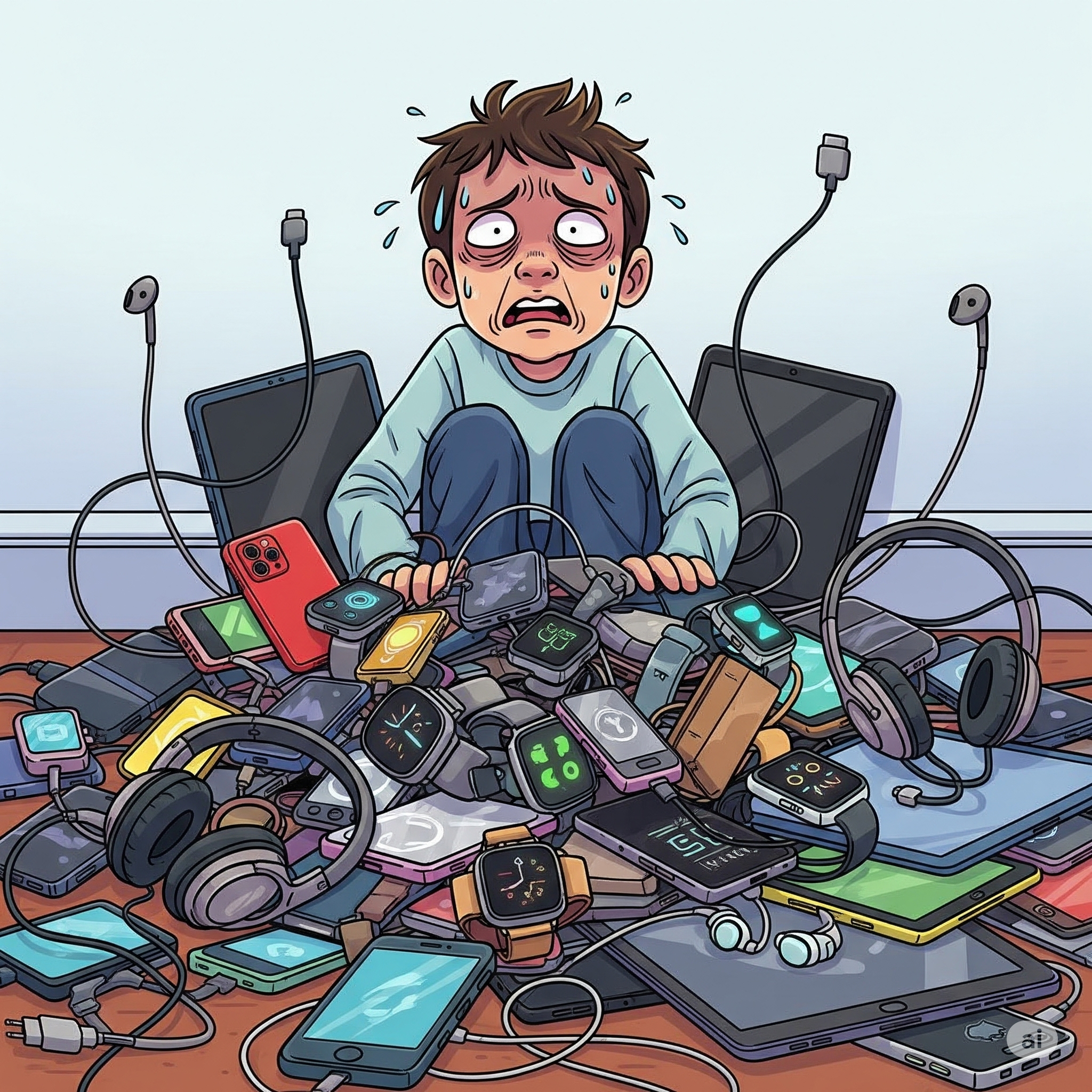Physical Address
304 North Cardinal St.
Dorchester Center, MA 02124
Physical Address
304 North Cardinal St.
Dorchester Center, MA 02124


The question hangs in the air, a whisper that has grown into a collective sigh: has consumer technology peaked? For many, the thrill of unwrapping a new gadget has lost its lustre. The latest smartphone, with its slightly better camera and marginally faster processor, no longer feels like a revolutionary leap, but a predictable, incremental upgrade. The jump from a flip phone to a touchscreen smartphone felt like science fiction becoming reality, but the leap from last year’s model to this year’s feels more like a subtle refinement.
This feeling of a technological plateau has led many to believe that the golden age of consumer tech is behind us. But to view the current landscape through this lens is to miss a far more profound and exciting shift. Consumer technology hasn’t peaked; it has simply moved from a period of dramatic, hardware-driven breakthroughs to a new phase of innovation that is more subtle, more pervasive, and arguably, more transformative. The revolution is no longer just about the shiny device in your hand—it’s about the intelligence, software, and services that power it, and the new values that are driving its development.
The argument for a “peak” in consumer technology often points to a single metric: the slowing pace of hardware innovation. A decade ago, smartphone cameras improved from grainy images to high-definition photos in just a few years. Now, the annual improvements are so small they often require a trained eye to spot. The physical form of the smartphone has been largely standardized, and battery life, while improving, hasn’t yet delivered the multi-day experience many dream of.
However, this perceived slowdown is a natural consequence of maturity. The core technologies powering our devices—processors, touchscreens, and cameras—have been refined to a point where gains are now more about efficiency and optimization than dramatic breakthroughs. The laws of diminishing returns have kicked in. A new iPhone doesn’t need to reinvent the wheel every year because the wheel is already incredibly efficient and well-designed. The focus has shifted from making a completely new device to making an existing device more intelligent and integrated into our lives.
This isn’t a sign of stagnation, but a signal that the innovation engine has moved from the factory floor to the cloud and the code.
If hardware was the driving force of the last decade, Artificial Intelligence is undoubtedly the driving force of the next. AI is not just a feature; it’s the invisible layer that is fundamentally changing how we interact with technology. It’s the “wow” factor that has moved from the physical to the digital realm.
Consider the role of AI in our daily lives. Personalized recommendations on streaming services, intelligent health monitoring on our smartwatches, and voice assistants that seamlessly manage our schedules are all powered by sophisticated AI algorithms. The innovation is not just in the device itself, but in the software that makes it smarter, more intuitive, and more tailored to our individual needs. The real upgrade isn’t a faster processor, but a more helpful digital assistant or a more accurate health diagnostic tool.
The rise of generative AI has opened up a new frontier entirely. It’s democratizing creativity and productivity, allowing everyone from graphic designers to office workers to produce high-quality content with a few simple prompts. This shift has even led some to declare that the “consumer software window” is open again, as AI creates new opportunities for start-ups to build revolutionary new services on top of these powerful models.
The narrative of “peak tech” also ignores the expansion of consumer technology beyond the smartphone and computer. We’re in the midst of a boom in other areas, each with its own set of revolutionary leaps:
The feeling that consumer tech has peaked is understandable, but it’s a symptom of a myopic focus on hardware. The revolution is now happening on a different front, one driven by a convergence of AI, software, and a greater emphasis on social and environmental responsibility. We are not at the end of a long journey, but at a transition point to a new, more intelligent, and more integrated era of technology.
So, has consumer technology peaked? In a word, no. According to Statista, global sales of smartphones for instance, reached 1.24 billion units in 2024. The next wave of innovation may be less about the shiny gadget and more about the invisible intelligence that powers our lives. The excitement is still there; you just have to know where to look. It’s no longer about a single, show-stopping product, but a constellation of technologies working together to make our world smarter, more connected, and more sustainable. And for a “Future Ready Hub” blog, that is a far more compelling story to tell.